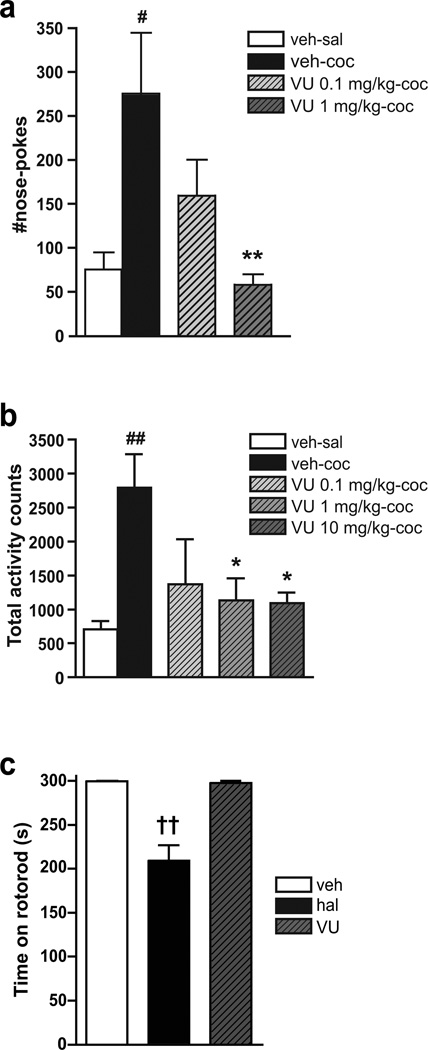Fig. 1.
Behavioral effects of the M4 receptor PAM, VU0152100 in NMRI mice. a In the acute self-administration model, cocaine (0.03 mg/kg/inf., black column; n=14) induced a significant increase in the number of nose-pokes as compared to saline (white column; n=11). Pretreatment with VU0152100 (0.1 and 1 mg/kg, i.p., grey columns; n=13 and 11, respectively) dose-dependently inhibited nose-poking for cocaine, reaching significance at 1 mg/kg. b In the activity boxes, cocaine (30 mg/kg, s.c. black column; n=6) induced hyperlocomotion as revealed by a significant increase in the number of total activity counts as compared to saline (white column; n=6). Pretreatment with VU0152100 (0.1, 1, 10 mg/kg, i.p., grey columns; n=5–6) significantly reduced cocaine-induced hyperlocomotion. c Time spent on rotorod after i.p. pretreatment with vehicle (veh, white column), haloperidol (hal, 0.5 mg/kg; black column), or VU0152100 (VU, 10 mg/kg; grey column) (n=9 in each group). Haloperidol significantly reduced time spent on the rotorod when compared to vehicle. In contrast, VU0152100 had no effect on rotorod performance. All data represent group mean ± SEM. #p<0.05, ##p<0.01 vs. vehicle i.p. followed by saline (veh-sal); *p<0.05, **p<0.01 vs. vehicle i.p. followed by cocaine (veh-coc); ‹‹p<0.01 vs. veh (one-way ANOVA followed by Dunnett’s multiple comparison test)

